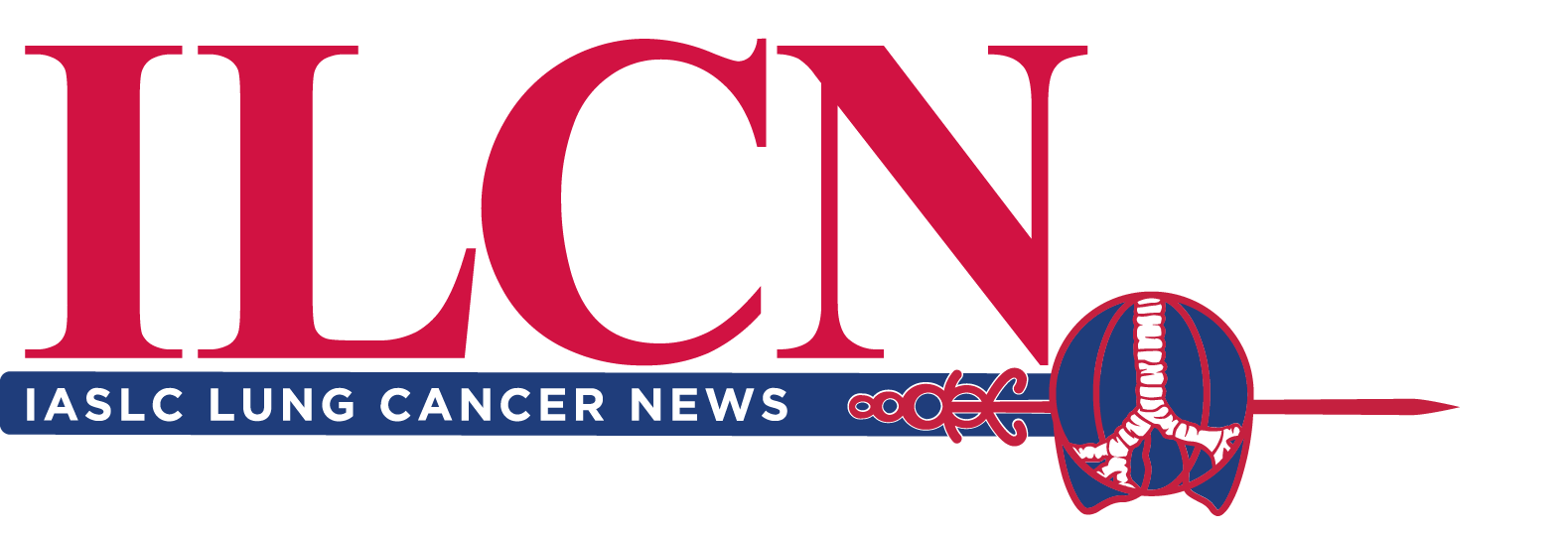The Con Side of PORT
Postoperative radiation therapy (PORT) in NSCLC has been a controversial topic since the publication of the PORT meta-analysis in 1998.1 Through this meta-analysis and subsequent retrospective reviews, we learned that PORT has associated toxicity, as evidenced by the decrease seen in OS for patients with completely resected NSCLC with N0 or N1 involvement.1,2,3,4,5
For patients with N2 disease involvement, however, the question of PORT remained, as some studies have demonstrated improvements in OS for patients with N2 disease when treated with PORT.3,4,5,6
In these studies, the benefit of reducing disease progression from N2 involvement seemed to outweigh the risks of toxicity. These studies, however, were either retrospective or based on an unplanned subset analysis from prospective data.
The LungART trial sought to put an end to the controversy of PORT for patients with completely resected N2 NSCLC. This trial, which was recently presented at the European Society of Medical Oncology in September 2020, provides the most robust data and level 1 evidence yet on the role of PORT in stage III NSCLC. It is the largest trial conducted to study this question, with 501 patients randomly assigned to receive PORT or to a no-PORT control arm.7
The vast majority (96%) of patients underwent preoperative or postoperative chemotherapy, with only a small subset of patients treated with preoperative chemotherapy alone (12%-14% in the PORT and no-PORT arms, respectively). Most patients (90% vs. 92%) had disease staging by PET scan, reflecting systematic and uniform noninvasive staging of most patients.
Although the mediastinal relapse rate was substantially reduced from 46.1% to 25.0% with the use of PORT, any potential DFS benefit was negated by toxicities observed in the PORT arm, thus resulting in a negative trial on the role of PORT. Death from other causes was 13.9% in the no-PORT arm, versus 30.4% with the use of PORT. There were 16 cardiopulmonary, 5 second primary cancer, and 3 PORT or chemotherapy-related grade 5 toxicities observed in the PORT arm. Three early grade 5 toxicities occurred in the PORT arm (cardiopulmonary arrest, pneumonitis, and pneumonia), versus no early grade 5 toxicity in the no-PORT arm. Late grade 3-4 cardiac and/or pulmonary toxicity was also more common with PORT (26/10.8%, vs. 12/ 4.9% with no PORT).
The prescription dose in the LungART trial was 54 Gy, and 89% of patient were treated with 3D conformal radiotherapy (3D-CRT). With this radiation technique and dose, the risks of PORT appear to outweigh its benefits. Therefore, the LungART authors do not recommend PORT as standard of care for R0-resected NSCLC.
It is unclear whether a higher rate of intensity-modulated radiation therapy (IMRT) use, better quality assurance of the PORT fields and dosimetry, or better quality assurance of the surgical procedure and chemotherapy would have been able to offset the increased toxicity from PORT. Although all these factors may play a role in reducing toxicity, it is questionable whether the magnitude of such an effect would be sufficient to result in a significant improvement in DFS with PORT. At the IASLC 2020 World Conference on Lung Cancer Singapore, we recently presented an association of increasing radiation heart doses with decreased OS for patients receiving PORT, consistent with the increased rate of cardiopulmonary and toxicity-related deaths observed in the LungART trial.8
The preliminary pulmonary and cardiac dosimetric parameters in the PORT arm, however, were not unusually high (lung V20: 23%; mean lung dose: 12.7 Gy; mean heart dose: 13.4 Gy; heart V35: 15%), suggesting that the 3D-CRT technique resulted in reasonably good radiation treatment plans. It may well be that PORT with other more modern radiation techniques such as IMRT or proton therapy to nodal stations near the heart, such as subcarinal or low hilar nodal regions, would still not be able to reduce cardiac dose in a manner sufficient to clinically reduce toxicity. Until such clinical data are obtained, however, these arguments are mere speculation.
Most patients received postoperative chemotherapy. How the LungART data apply to patients who undergo neoadjuvant systemic therapy and who are found to have persistent N2 disease at the time of surgical resection is unclear, because only 12 (14%) of patients received preoperative chemotherapy alone. We have previously reported that patients with initial N2 involvement treated with neoadjuvant chemotherapy and who had persistent pathologic N1 disease at the time of surgery may be at a particularly high risk of 60% of mediastinal relapse, which could increase any potential role of PORT.9
No matter where one stands on the role of PORT, the 3-year DFS rates of 47.1% and 43.8% are among the highest for a surgical patient population with locally advanced NSCLC, which is a testament to the quality of the trial, quality of staging, and medical care provided to these patients. These standards are likely to continue to improve with the integration of targeted therapies and immunotherapy into the paradigm for resectable lung cancer. Targeted therapies are now being integrated into the treatment paradigm for patients with resected NSCLC with targetable mutations, as seen in the recently published ADAURA trial.10
Yet another approach to incorporate radiation therapy in the future may be neoadjuvant radiation therapy combined with immunotherapy11
or neoadjuvant chemoradiation therapy with immunotherapy,12
both of which are currently being investigated. However, these studies will need to be compared to neoadjuvant chemo-immunotherapy, single- or dual-checkpoint inhibition approaches that have shown very promising results thus far.11,12,13
It remains to be defined what role PORT will play in the setting of a rapidly changing landscape of systemic therapies. In addition, it will be important to investigate how the LungART data compare to nonsurgical treatment approaches in an era of continuously improving radiation therapy techniques and increasingly individualized, better tolerated, and more effective systemic therapies such as TKIs and immunotherapies. To further understand the role of PORT, we await the final publication of the LungART study, as well as the results of another phase III trial in China that is also investigating the role of PORT using 3D-CRT—but to a total dose of 50 Gy in 2 Gy per fraction—which has been completed but not yet reported (NCT00880971).
Ultimately, the Level 1 evidence from the LungART randomized controlled trial of PORT versus no-PORT failed to show that the benefits of PORT outweigh the risks. Because of this, PORT, at least when using a 3D-CRT technique to a total dose of 54 Gy, should not routinely be performed in patients with NSCLC with completely resected N2 involvement. Accomplishing the LungART trial was a phenomenal feat, and the authors should be applauded for enrolling and randomly assigning more than 500 patients. The data obtained in the study are the most robust data that we have on PORT, and it is unlikely that such data will be obtained in the near future. As the field of radiation oncology continues to advance with more conformal approaches such as IMRT and proton therapy, the cardiopulmonary risks will likely be further mitigated. This will widen the therapeutic ratio to allow for more opportunities for disease control for our patients with resected lung cancer. We look forward to the final publication and further analyses of the LungART data to help identify the subset of patients for whom the benefits of PORT outweigh the risks.
- 1. PORT Meta-analysis Trialists Group. Postoperative radiotherapy in non-small-cell lung cancer: systematic review and meta-analysis of individual patient data from nine randomised controlled trials. Lancet. 1998;352(9124):257-263.
- 2. Lally BE, Detterbeck FC, Geiger AM, et al. The risk of death from heart disease in patients with nonsmall cell lung cancer who receive postoperative radiotherapy: analysis of the Surveillance, Epidemiology, and End Results database. Cancer. 2007;110(4):911-917.
- 3. a. b. Lally BE, Zelterman D, Colasanto JM, et al. Postoperative radiotherapy for stage II or III non-small-cell lung cancer using the Surveillance, Epidemiology, and End Results database. J Clin Oncol. 2006;24(19):2998-3006.
- 4. a. b. Robinson CG, Patel AP, Bradley JD, et al. Postoperative radiotherapy for pathologic N2 non-small-cell lung cancer treated with adjuvant chemotherapy: a review of the National Cancer Data Base. J Clin Oncol. 2015;33(8):870-876.
- 5. a. b. Douillard JY, Rosell R, De Lena M, et al. Impact of postoperative radiation therapy on survival in patients with complete resection and stage I, II, or IIIA non-small-cell lung cancer treated with adjuvant chemotherapy: the Adjuvant Navelbine International Trialist Association (ANITA) Randomized Trial. Int J Radiat Oncol Biol Phys. 2008;72(3):695-701.
- 6. Billiet C, Decaluwe H, Peeters S, et al. Modern post-operative radiotherapy for stage III non-small cell lung cancer may improve local control and survival: a meta-analysis. Radiother Oncol. 2014;110(1):3-8.
- 7. Le Pechoux C, Pourel N, Barlesi F. An international randomized trial, comparing post-operative conformal radiotherapy (PORT) to no PORT, in patients with completely resected non-small cell lung cancer (NSCLC) and mediastinal N2 involvement: primary end-point analysis of Lung ART. Ann Oncol. 2020;31(suppl 4):S1178. Abstract LBA3_PR.
- 8. Shepherd AF. Heart dose is a dosimetric predictor of overall survival in patients with NSCLC undergoing post-operative radiation therapy. Poster presented at: IASLC 2020 World Conference on Lung Cancer Singapore. Program FP04.01.
- 9. Amini A, Lou F, Correa AM, et al. Predictors for locoregional recurrence for clinical stage III-N2 non-small cell lung cancer with nodal downstaging after induction chemotherapy and surgery. Ann Surg Oncol. 2013;20(6):1934-1940.
- 10. Wu YL, Tsuboi M, He J, et al. Osimertinib in resected EGFR-mutated non-small-cell lung cancer. N Engl J Med. 2020;383(18):1711-1723.
- 11. a. b. Bott MJ, Yang SC, Park BJ, et al. Initial results of pulmonary resection after neoadjuvant nivolumab in patients with resectable non-small cell lung cancer. J Thorac Cardiovasc Surg. 2019;158(1):269-276.
- 12. a. b. Forde PM, Chaft JE, Smith KN, et al. Neoadjuvant PD-1 blockade in resectable lung cancer. N Engl J Med. 2018;378(21):1976-1986.
- 13. Reuss JE, Anagnostou V, Cottrell TR, et al. Neoadjuvant nivolumab plus ipilimumab in resectable non-small cell lung cancer. J Immunother Cancer. 2020;8(2):e001282.






